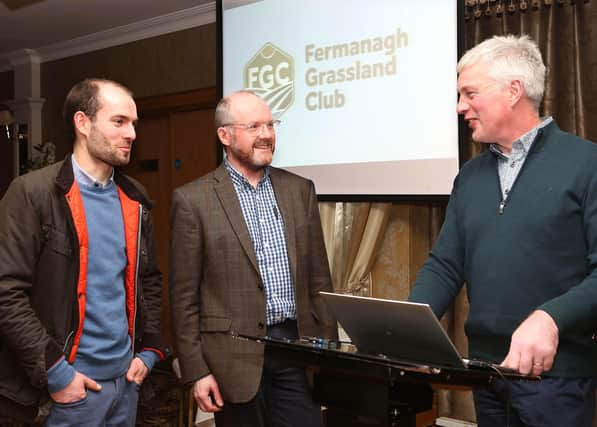Challenges and opportunities of dairy farming near the coast


Members of Fermanagh Grassland Society were recently briefed on dairy farming near the sea from Alastair Cochrane, who farms 230 hectares at Glentask, Bushmills, where he and his family milk up to 400 autumn calving cows. He is joined by his wife, Phyllis and sons Conor and Alexander.
The herd of Holsteins crossed with Montbeliarde, has an average yield of 9,100 litres with 4.40 butterfat and 3.47 protein with average SCC of 130 and TBC of 3.
Advertisement
Advertisement
The farm business comprises of three farms about 500 yards apart. One of the farms is close to Dunluce Castle.
Alastair says his grandfather was a pioneer farmer and one of the first 12 farms in the United Kingdom to install a bulk milk tank in 1949. His father was also a pioneer of zero grazing, using this method of feeding grass to cows as far back as the 1970s, using a double chop harvester.
The herd expanded to around 260 cows by 2005 producing some 10,000 litres of milk but the family suffered a setback with toxins in silage and it took some time to get over the effects.
One of the features in the parlour is mechanically brushing the cows’ teats rather than hand wiping. He says this has been a great success with little or no mastitis as it reduces hand contact.
Advertisement
Advertisement
Alastair says they aim to make quality silage but confessed the spring of 2021 was challenging and they mowed, tedded and picked up silage on a sunny day between mixed weather. They also grow spring oats for wholecrop silage.
For grass production, the farm has been using LESSE slurry spreading for up to eight years with great results.
One of the problems living near the coast was the salt damage to sheeting on sheds.